 Alexander the Great conquered Palestine in 332 BC. From this period onward, Judaism began the long trek toward division. By 150 BC, the Pharisees, Sadducees, and Essene were the three major sects. The Pharisees were created as a group of laymen and priests (220 BC) who, at that time, would be typified by service without expectation of reward. This attribution toward service would ethically counter the Sadducees (Sadouk=Greek) and Sadducaic Temple control—the Sadducees* began to adopt the Hellenistic influence.
Alexander the Great conquered Palestine in 332 BC. From this period onward, Judaism began the long trek toward division. By 150 BC, the Pharisees, Sadducees, and Essene were the three major sects. The Pharisees were created as a group of laymen and priests (220 BC) who, at that time, would be typified by service without expectation of reward. This attribution toward service would ethically counter the Sadducees (Sadouk=Greek) and Sadducaic Temple control—the Sadducees* began to adopt the Hellenistic influence.
*Sadducees: Jewish aristocrats who formed financial and legal associations with the Greeks. They were favored under Greek authority and were given control of the Temple. They become the Temple Priests Jesus later confronts.
There had been no prophets since Malachi, and to fill this inspirational vacuum, the Pharisees wafted more toward legalism. Their ascension arrived during the administration of Alexandra, who was in the Maccabbean lineage (76 BC). Pertinent to both John and Jesus’ ministries, it should be noted that later corrupting influences crept into the Pharisaic movement, such as payment for special prayers to secure loved ones into heaven (Mt. 23.14).
The Essenes were composed of two primary groups, the Ossaeans and the Nazarenes, although there were other splinter groups. The Essenes originated when the ‘Teacher of Righteousness’ and those who professed to be the righteous remnant* were led north into the Dan River region (150 BC approx.). Settlements also developed in the Hauran, south of Damascus. Ossaean Essene (scribal authority, legalistic) and Nazarenes (esoteric, mystic-spiritual) accounted themselves as the righteous remnant of the former unified priesthood. Both groups would perceive themselves as a part of the “sons of light.”
*See, Seth & Enosh, Enoch, and Noah.
Both Nazarene and Qumran Essene (Ossaeans) viewed, as did John, the coming Jewish Deliverer tied to repentance by the nation of Israel. According to John, the Deliverer’s arrival would also include the removal of the Sadducees from Temple control. All sects of the Essene wanted the Sadducees removed, and most Pharisees favored this removal as well. Many internecine religious conflicts coursed through the veins of Israel. John’s message established a new and powerful unifying force. John is cemented in biblical history as an ascendent transitional figure, considered by many the Prophet of Prophets.
John’s primary teaching was “knowledge (Gr. gnosis)* of salvation to His people by the remission of their sins” (Lk. 1.77 ). Read carefully; the previous scripture tells us that this understanding of salvation is transferred as one begins to remit from sin, “knowledge of salvation…by the remission of their sins.” Symbolized by the cleansing of the baptism, John intends the impugnation of sin should also cease, in effect “…to prepare His ways (1.76).” By remitting sin (set aside?), the knowledge of salvation can come forward, and the spirit within is discovered, much as Jesus later taught.
This clearing of imputation halts the fixation on sin. It redirects the soul toward preparation and renewal, but by the mystic transference to Spirit as the center of authority, not by the law as the central authority. The offer of forgiveness instead of tracking sin is an emphasized principle of the Way, and Jesus speaks profusely on these subjects. In effect, this transference, this change in logos, opens the way and thus prepares each person for the righteous message of the Deliverer.
John would walk “before the face of the Lord (God), and to prepare His ways (76). (79) To give light [of the spirit] to those who sit in darkness and in the shadow of [spiritual] death, to guide our feet into the way of peace.”
*gnosis: “knowledge acquired by learning, effort, or experiences” (from Kregel Companion Bible, 1990). Remission: sin no longer imputed to you, offering forgiveness (“…neither do I condemn thee. Go, and sin no more,” Jn. 8.11).
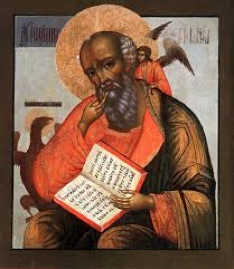
Dedicated to the Nazarite tradition from birth, John’s early training emerged from the group known as the Qumran Essene (Ossaeans). Often referred to today as the ‘scribal authority,’ it is from this group that the biblical reference ‘lawyers and scribes’ derives. However, unlike some of his Essene brothers, John’s message cannot be considered wholly legalistic but a higher spiritual call for the repentance of Israel and a return to the fundamentals of righteousness, which considers the inner man individually, not legally. Thus, even by contrast, John’s teaching is of the heart. Impugning sin, the function of law, must be set aside in preparation for the Messiah. John’s water baptism provides the vehicle for this transition, moves past the current interpretation of the law, and accepts the cleansing of sin and the pursuance toward righteousness by direct commitment.

Sow seed for the teaching of the heart.
♦
CALL TO RIGHTEOUSNESS
Although John would have wanted everything according to the law, John’s call to righteousness is best described in Lk. 1.72: “To perform the mercy promised to our fathers, and to remember His holy covenant,” and v. 75, “In holiness and righteousness before Him all the days of our life. (76) And you, child, will be called the prophet of the Highest.” The first seven words of Lk. 1.72, “To perform the mercy promised to our fathers,” hinges on the heart of John’s teaching. The mercy itself would be equated through forgiveness, certainly not the application of the law, and through baptism, righteousness would be established as the acquired precept of the soul—once lost, perhaps, but now reinstated.
For John, the accomplished deed of mercy relative to sin is intrinsic to the baptismal itself. For the person receiving the baptismal, it is intended they should also repent. The source for the repentance should flow from the spirit within, whereas previously, the repentance issued from the efforts [will] of the man himself. A misconstrued obedience to the law must now take hold. ‘Working-Self,’ or efforts at self-control, were recognized, but it was intended that the spirit should have sway and that the spirit should oversee the law so the transition may be completed.
Loving your neighbor instead of hating your neighbor does not work for the mind but is an action of the spirit, a 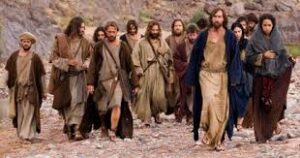 condition of the heart. The repentance is not only in actions but in attitude toward others and life generally. In short, recalling God’s covenant to the people requires spiritual adherence (inward), not legal (outward). Righteousness comes from the heart (spirit), not from the legal configurations of men; spiritual revelation counters the process of intellectually following the law.
condition of the heart. The repentance is not only in actions but in attitude toward others and life generally. In short, recalling God’s covenant to the people requires spiritual adherence (inward), not legal (outward). Righteousness comes from the heart (spirit), not from the legal configurations of men; spiritual revelation counters the process of intellectually following the law.
In verse 1.69, John is given the highest designation as a prophet—Zacharias, John’s father and also a respected priest, prophesies, “And has raised up a horn of salvation for us.” Although John is a “horn of salvation,” he is not the Messiah himself but will perform as the forerunner to him. Later, Jesus will extend mercy and pronounce forgiveness. He will perform not in water but with the Holy Spirit.
The members of John’s Essene division, the Ossaeans, would unlikely view themselves as needing repentance. They viewed themselves as a part of the ‘righteous remnant’ of the Zadokite priesthood, similar to the belief of the Nazarenes in that respect. As lawyers and scribes of the law, Qumran Essene believed themselves to be the repository of repentance and that repentance came from the ever-closer following of the law. From the Ten Commandments, the Pharisees, a closely associated group with the Ossaeans, had derived over two thousand laws*, many of which had to do with sabbath observation. Ossaeans believed themselves the rightful heirs to Temple authority and the Temple itself. Their intellectual challenges to Jesus would define their legalistic-repentance views.
*Ossaeans (scribes) and Pharisees are closely associated in scripture.
By the nature of law itself, more laws (new laws) would naturally heighten the Pharisaic position of authority. These laws were twofold: Pharisaic influence created extra laws concerning cleanliness, ritual, abstention, and celibacy (Ossaeans only), of which none were pronounced under Mosaic law. They expanded the Sabbath law in detail. The second organization of law became a developing commentary on when and how these laws were applied. Discussions and commentaries on the prophets and Mosaic law would become extensive and minute.
By making and enforcing these ‘extra’ laws, excepting celibacy, the Ossaeans, particularly the Pharisees, led the people to believe that holiness would surely follow legal obedience without reference to attitudes or motives. Within this lawyered embroilment, the Pharisees became misdirected and plunged Judaism further into legalism, thus causing decay. Ossaeans kept secrets for the priesthood only, leaving the ordinary person with only the Pharisaic attribution and no counterbalance to any mystic transformation, for which Jesus would later become well-known through healing, forgiveness, miracles, and a more authentic presentation of the Father’s will for His people. Contrary to Ossaean protocols, John offers absolution, followed by repentance and pathway, clearly a more holistic vision than his own sect’s reliance on the law as foremost.
Why most orthodox Christians resist Jesus being described as a mystic is hard to determine, and their view might be the same for John. On the one hand, you have the written law, structured, firm, and concretized as to function; on the other lies the unseen, the spirit, not properly brought forth until Jesus’ time and delivered to the people. The oft-mentioned’ kingdom within’ is a primary example of this mystic translation into a more omnibus spirituality. The impact and works of the unseen far outweigh the lawyered tradition. If unseen, surely this speaks to the mystic transformation from within, whether by anointing, realization, or the simplicity of belief.
The Nazarenes, represented by Jesus, would see repentance as a wholesale change of heart and mind. It is they who would teach the Way, essentially an enlightenment teaching dealing with oneness or wholeness with God. This enlightened condition would require an altered relationship with God and toward God, a new form of righteousness. Suppose love is paramount (Mt. 22.34-40)*. In that case, unity and brotherhood cannot be far behind, offering wholeness and love toward God, contributing to oneness with Him (Jn. 10.30). The rectification of partaking in ‘forbidden fruit’ is resolved within and relies on relationship to the Spirit of God for this resolution. As pictured, the law may oversee, but the man himself must heed the call and respond to the higher relationship.
*As to the Pharisees & Sadducees specifically, John admonishes them to “bear fruits worthy of repentance” or else face the “wrath to come” (Mt. 3.7-8).
♦
Water and the Spirit

John preaches a fundamental shift in the current pathway of Judaism—you no longer need a priest or the synagogue as such, nor one sect or another; you need only come to God and be baptized and engage a spirit-led repentance. Baptism symbolizes a changed nature and does not mean you will do everything perfectly well or never sin. However, the changed nature will entail a change in thinking. Essentially, the new thinking comes from this changed nature. Jesus will later describe this process to Nicodemus as ‘born-again’, intended to awaken the spirit within if even a little, so the awakening may continue.
The shift in teaching now completely swings from the legalistic view, and the person no longer identifies with the law, which in those days required detailed adherence. Still, the soul is now identified with the changed nature, sometimes referred to as spiritual nature. The one is an attribution to the law, the other is an attribution to the spirit of God directly, or spirit within,* and that you carry God with you at all times. John initiates a type of born-again experience, even though portrayed symbolically through water purification.
*Jn. 10.34, 38; Lk. 11.40, 17.21.
The thinking shifts from rules, which are law and condemnation by law, into beingness with God and actions that should follow. The lawyered man is sublimated, and the spirit man comes forth. From micro-attentiveness to law into a macro-vision that embraces a higher relationship with God, the result produces enlightenment into the nature of God and is shared with God.
In John’s view, all must change! The baptism means to convey a complete submersion into this changed nature, intended as a strong commitment, just as it is today. Relying on God’s favor due to being sons of Abraham will no longer be advantageous. A whole new order now moves forward. The law has its place, but the centering upon God’s heart and mind must now supersede. Much like the back of the hand compared to the palm, though part of the same hand’s back and the palm look nothing alike.
John is formatting a new (restored) religion, which Jesus will complete. This ‘born again’ commitment would require coming forth unto God rather than only obedience to religious laws, including sacrifice. Even David understood the principle that sacrifice (Law) would not be enough to rectify the murder of Uriah the Hittite.* But legalism had crept into Judaism since Ezra (450 BC). Even though Malachi prophesied Messiah (Mal. 4.5), Israel continued to suffer under an increasingly lawyered tradition and without a prophet until Jesus arrived. The new commitment signifies a new awakening, an awakening to higher truth. John requires each man to stand and come forth.
*Psalm 51, especially v. 11.

Sow seed for the changed nature to manifest.
♦
Nazarene John?
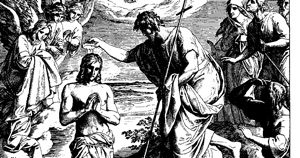 John does not contend with the Messiah, as John’s sect, the Qumran (Ossaean) Essene, will later do. John baptizes with water, and the Messiah will baptize with the Holy Spirit (Lk. 3.16). Thus, John understands his role as a forerunner quite well (Jn. 1.25). As he sees Jesus, he immediately announces that he is the Messiah. Many scholars contend that John was the teacher of Jesus, at least to some extent, but had a closer relationship than scripture indicates. Even so, Jesus then submits to John, and in doing so, both submit to each other’s proper position. In heaven, there is a proper order to all things, so when John and Jesus meet, John, being in leadership, then anoints Jesus. The appropriate order in heaven is reflected on earth.
John does not contend with the Messiah, as John’s sect, the Qumran (Ossaean) Essene, will later do. John baptizes with water, and the Messiah will baptize with the Holy Spirit (Lk. 3.16). Thus, John understands his role as a forerunner quite well (Jn. 1.25). As he sees Jesus, he immediately announces that he is the Messiah. Many scholars contend that John was the teacher of Jesus, at least to some extent, but had a closer relationship than scripture indicates. Even so, Jesus then submits to John, and in doing so, both submit to each other’s proper position. In heaven, there is a proper order to all things, so when John and Jesus meet, John, being in leadership, then anoints Jesus. The appropriate order in heaven is reflected on earth.
Is it possible that John was encouraged as a forerunner by the Nazarenes themselves? It is a controversial question seldom asked. Nazarenes had the same access to scripts as those in Qumran. Even though Jesus opposed the legal approach to spirituality, all Essene priests shared a similar knowledge base. However, John does not teach the iota of the law but a much broader horizon of spirituality, intended to lead the people to Messiah. John prepares the people to receive the mystical message and doctrine Jesus will later put forward. A baptism into changed thinking (love instead of condemnation) was a revolutionary perspective and an opportunity for which the people were hungry.
Further, it would be evident that John and Jesus knew one another. After all, they were cousins, and in those days, families remained close. Mary visited Elizabeth while both were pregnant. John establishes some of the fundamentals of Jesus’ ministry and introduces Jesus, making for an association of teaching, outlook, mission, and easy familiarity. John later needs to be consoled that Jesus is the Messiah, but at their first public meeting, he has no doubt.
Of repentance, people can follow laws quite closely, but hearts and minds often lag, as John alludes to, and Jesus later edifies: “committed adultery with her in his heart” (Mt. 5.24); and “whoever is angry… without a cause shall be in danger of the judgment” (22). Both statements lend themselves to the core principle of understanding hearts and minds. “…he knew what was in a man” (Jn. 2.23-25) is not reserved for acts of healing and teaching only but references a much deeper thought-teaching, the teaching of heart and mind, essentially the teaching of the Way.
Piecemeal, laws may be followed, but pathway centers a new way of life. John essentially stands in the gap of transference into a direct relationship with God. This last is very important for understanding John. He is not only the forerunner, but John is also the pivotal transitional figure in the new spirituality that will begin to move upon the land.
John’s ministry introduces a change in the direction of Judaism.
John introduces wholeness within the pathway of renewed heart and mind. The pathway concept, as opposed to the strict following of the law, produces a walk with God or walking in the Way. John represents the repentance pathway; Jesus would later refine it as the love pathway. Even so, God becomes more touchable and more personal through the advent of the new message and the baptismal (water/Holy Spirit). By the spiritual nature of their ministries, John, as well as Jesus, restructured the law.
For the commoner, John cracks the door into the revelation of God within, which Jesus will later open wide. John is not the man who will accomplish the final task, but he realizes someone must prepare the way for him who will. The structure of the current priesthood must be struck down, and the higher call to righteousness within the individual must be called forth. These viewpoints reflect Nazarene theology, at least as Jesus presented it. John the Baptist preached stridently and urgently that this change of direction now lay before the Jewish people. This call to spiritual arms, this harsh clanging bell, would keynote John’s ministry.
♦
CONFESSION & BAPTISMAL
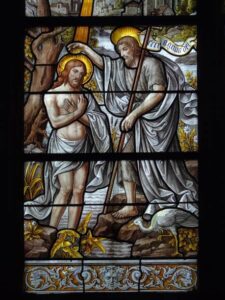
The second great theme of John was confessing sin and receiving the ritual cleansing by baptism. The Essene were the only religious group known to use baptism. The baptismal is a powerful element representing commitment intended as a true calling and anointing. For example, water can be seen, but the Holy Spirit is not seen (Mt. 3.10-17), so faith itself, especially in things not seen, becomes a preeminent virtue of the early church, reflecting a true calling.
The baptismal brings new substance to the soul and a new pathway extended unto the nation’s soul. The people would have received the baptism as a holy event.
The Political/Religious Message
John preached a political/religious message. He condemns the priesthood, much as Jesus does. John’s denunciations of the current religious order might leave some wondering what his speaking truly meant. However, from the crowds that gathered to John, it seems the commoner heeded the call and perhaps intuitively understood. Among the people, the need for spiritual change in Israel began to develop into a life of its own.
Many Pharisees found a willingness to take the baptism. However, the motive was to ingratiate themselves with the people, but with no real intent to change. Other Pharisees may have felt the need and the calling, though they did not know what it was about—witness Nicodemus. Contrarily, the Sadducees would have seen no need to participate in a new baptism, for they followed only the Pentateuch and did not recognize the need for a messiah.
Some would see John’s ministry as the initial step to rid the land of the Romans; others would see his message as integral to the Messiah. The Pharisees later ask John, “Why then do you baptize if you are not the Messiah, nor Elijah, nor the Prophet?” (Jn. 1.25). Even the religious hierarchy was questioning, then doubting, trying to find their place within the messianic vision held by many Jews of that day. Minds were being influenced, and a new movement was launched within Judaism.
John’s job was to prepare the way. While others waited, John acted. While others might stand by, John picked up a rock and threw it in your face. Many watched and hoped for a sign, but John baptized and stood up for Messiah’s coming—a reformation within Israel must be established! He not only preached repentance, but it was repentance (changed mind) that would lead to a revelation-oriented mind, thus new spiritual freedom, and shared enlightenment with God.
might stand by, John picked up a rock and threw it in your face. Many watched and hoped for a sign, but John baptized and stood up for Messiah’s coming—a reformation within Israel must be established! He not only preached repentance, but it was repentance (changed mind) that would lead to a revelation-oriented mind, thus new spiritual freedom, and shared enlightenment with God.
John’s comprehension of the vision might not have been complete, yet he tells us the process: that the axe is taken to the roots of evil to repent and produce good fruit and that the baptism into this commitment should be performed now, done openly before God. With the addition of the anointing of the Holy Spirit and the Shekinah glory, the early church practiced just these steps.
John leaves no doubt who will be left out of the Deliverer’s Israel—the Pharisees and the Sadducees. These conflicts were not a light dance of disagreement with the powers that be. John condemns the Sanhedrin of Jerusalem. He pronounces that they will be swept away if they do not repent. Herod and his sinful kingdom must fall. To be replaced with what? This new creation would leave behind the powers that currently reigned, and this chilling insight would be conveyed to the religious hierarchy.
♦
Are you worthy?
A third theme would echo throughout John’s ministry: “bear fruit worthy of repentance” (Mt. 3.8). First, John says to confess weaknesses or shortcomings, second to purify or restore the soul by being baptized into the new understanding, and third is to redeem the mind or to bear fruit. The inner discipline moves toward a positive creation and worthy fruit and removes itself from the shackles of legalistic restraints. Healing on the Sabbath, as Jesus did, is an example of such restraints removed.
By inference, John determines Judaism has become rooted in unrighteousness, outstandingly represented by the current priesthood. Twisted and convoluted, typified by compounded legalism, neither the mystic message of unity with God nor the intellectual transition into the heart teaching was apparent. Similarly, John points to a lack of preparation within the Jewish community, which has not embraced the enlightened vision now offered. The religious hierarchy becomes those pronounced unworthy. John wants the whole of it consumed as if by fire.
John pronounces a new perspective in thinking—prepare in faith for that not yet seen (Messiah and awakening), a faith that seeks and receives from beyond the veil. Repent of unworthy thoughts, and sow new good seeds. Jesus will extensively teach these subjects.
As John says, “produce fruit in keeping with repentance,” and Jesus also speaks of bearing good fruit in Lk. 13.1-9. James mentions faith without works (more correctly, ‘actions’) is no kind of faith (Jm. 2.17). True repentance may begin with prayer, even baptism, but the redemptive process should also bear the fruit of the new pathway. This concept of presenting the teaching but walking on the path is integral to the Way. Teaching and pathway must always work together, or something is bound to go amiss.
Throughout John and Jesus’ ministries, the willingness to demonstrate or produce is far more emphasized than most people take note of. A  portion comes to us as loving your neighbor as your own family (repentance of anger, redemption by love). This fruit brings us to a much greater extended family, or brotherhood, and demonstrates love in the universal sense. Jesus speaks of a lantern shedding its light within the room and the city on the hill. These examples illustrate the spirit illuminating the mind and unifying teaching and pathway; that is, you must live the path. By this nature, we should go about our daily business and thus become the shining city upon the hill. These concepts reflect the new enlightenment John pronounces and which Jesus will fulfill.
portion comes to us as loving your neighbor as your own family (repentance of anger, redemption by love). This fruit brings us to a much greater extended family, or brotherhood, and demonstrates love in the universal sense. Jesus speaks of a lantern shedding its light within the room and the city on the hill. These examples illustrate the spirit illuminating the mind and unifying teaching and pathway; that is, you must live the path. By this nature, we should go about our daily business and thus become the shining city upon the hill. These concepts reflect the new enlightenment John pronounces and which Jesus will fulfill.
♦
What are your roots?
The fourth axiom: “The axe is already at the root of the trees, and every tree that does not produce good fruit will be cut down and thrown into the fire,” Matt. 3.10 NIV.
The above scripture is John’s call to action to participate. The mind must expunge itself and symbolically burn what is no longer useful: to “burn up the chaff with unquenchable fire” Lk. 3.17. (18) “And many other words John exhorted the people and preached the good news to them.” These last statements contain a very Essene quality—black and white, rousing, but also expressing finality.
The term’ good news’ delivered a fundamental message of spiritual salvation: confess sin (admit the truth about yourself), become baptized (accept the anointing), accept the changed nature God has anointed within you, honor the awakened kingdom within, and bear fruit accordingly. The reality that a person may still have sin issues under the law does not change the fact that he has come forth, that a different nature is now operating. John’s ministry focuses on awakening and receiving a new spiritual birth.
In Adam and Eve’s story, we observe the creation of the ego-self, which is based on desire (lust) for power and status. Thence, a shadowed consciousness emerges, one we have been stuck with throughout the history of humankind. The notion of spiritual acumen is permanently housed within this fallen consciousness, never entirely free to return unto God but always ruled in some fashion by the laws and hands of men. Now, this old man can be thrown off, and it is not so much based on how hard you work but on allowing the spirit to transition you into the new man. It is about planting, allowing, receiving, and not grasping to obtain. This awakened man will not only change himself but, by the spirit, also change the world.
To a great extent, John gives us himself: enlightened, dedicated, and whole within his purpose. He gives us the proto-version of the Way: pull up by the roots that do not bear fruit, burn it, and move into the spirit of God. Sowing good seeds assists in this change process. There can be no good fruit unless good seeds are planted in fertile ground, and it seems John understands this mission and process very well.
Doubt and halting steps do not measure up to John’s calling. Commit, he admonishes—the burning fire of the spirit consumes impatience and weariness, and Messiah comes to give the final interpretation of the Law and the Prophets. John has put himself on the line for the nation and the Jewish people. John pronounces Jesus but then lays himself down; he defers to him, who has now arrived.
Previously, prophets had always been concerned with either the people or the nation as a state. The greater enlightenment of the Way will not only apply to the Jew but later to the heathen, meaning anyone and everyone. John speaks to the Roman soldiers and tells them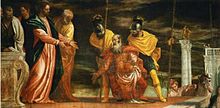 to take what is proper and not to steal for themselves (Lk. 3.14). He implies that everyone, even the heathen, is under God’s authority and that the new message includes all. Thus, he begins the fountainhead of not separating one man from another but including all men. His message reaches out to anyone, an appeal without limits.
to take what is proper and not to steal for themselves (Lk. 3.14). He implies that everyone, even the heathen, is under God’s authority and that the new message includes all. Thus, he begins the fountainhead of not separating one man from another but including all men. His message reaches out to anyone, an appeal without limits.
To appeal to those outside Judaism is borderline heretical at this time in Judaic history. Although being loving toward outsiders was not unknown, the tendency to view the world as’ them or us’ remained the Judaic standard, with the ‘us’ part giving credence to the chosen or protected people of God. The omnibus enlightenment message John brings now begins to take form. Jesus would later teach that this message, most emphasized as love and forgiveness, must reach every man’s heart and mind.
♦
MESSIAH COMES!
A fifth emphasis is an urgency to wake up now, and one mightier than I am is coming (Lk. 3.16). Some intent and some preparedness always precede significant change. Beside the Jordan River, a powerful and anointed prophet heralds change and the coming Messiah. Many people are hungry for his message. Accompanying John, a sense of rushing change presents itself, even amid God’s anointing power. The Sanhedrin has sent Nicodemus to inquire, perhaps to spy, and then return with his verdict. This fomentation, this spiritual light that seems to abound, people changed in their lives, making new commitments and being willingly baptized—to the Sanhedrin, the locusts had emerged from the desert soil.
John was beginning to wield a robust and influential ministry. This ministry is a religious/social movement stumbling out of itself and spilling over the countryside: brawny, raw, loud, and in your face. It is unremitting, forceful, pushy, willing to point fingers and dare you to strike. If you try to contain it, it will smash itself out of the box; if you try to grab it, it will turn and bite you; to limit it, you have yet to deal with Jesus. Most Christians today have trouble grasping the power and threat of John’s message.
Why was there a way finally found to murder John? For Herod, even though he enjoyed John and his preachments, the need to silence John to the outside world became absolute, and John was imprisoned. It was Herodias, Herod’s wife, who concocted the death of John the Baptizer. The roar of the people emerged from the bowels of Herod’s corrupt kingdom.
John’s ministry had already reached many thousands. It is thought that John spoke and taught in southern Judea years before revealing his formal ministry. Nonetheless, Jesus would soon be arriving. With him would come the announcement that the spirit of God is alive in you; His kingdom is within. Walk with me, and I will show you the Way.
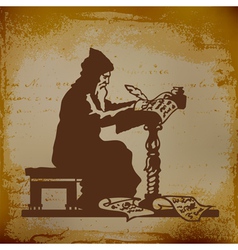
God Bless!

whoah this weblog is wonderful I love reading your posts.
Keep up the great work! You recognize a lot of individuals are
hunting around for this information, you can help this greatly. [edited for clarity]
I just couldn’t leave your website prior to suggesting that I extremely enjoyed the standard
info a person (you) supply to your visitors. Is going to be back
continuously to inspect new posts
Undeniably believe that which you said. Your favorite justification seemed to be the simplest thing to be aware of. I say to you, I certainly liked what people consider
worries that they just don’t know about. You managed to hit the nail on the top and also defined out the whole thing without
having effects.
Will probably be back to get more. Thanks [edited for clarity]
Good day I am so happy I found your webpage, I really found you by
accident, while I was browsing on Askjeee for something else,
Nonetheless, I am here now and would just like to say cheers for a
incredible post and an all round exciting blog (I also love the theme/design), I don’t have time
to go through it all at the moment but I have book-marked it and
I also included your RSS feeds, so when I have time I will be back to read much
more, Please do keep up the fantastic job.
Good post. I learn something totally new and challenging on sites I
stumble upon every day. It will always be helpful to
read content from other writers and use a little something from other sites.
Thank you. It is better to use the scriptural meaning or intent. Other writers have many philosophical approaches to The Way; my approach is very nuts and bolts. Read, Unconscious Growth. If you like that article you might want to download the e-book.
Hi, I do think this is an excellent blog. I stumbled upon it ;
) I am going to come back yet again since I bookmarked it.
Money and freedom are the greatest way to change, may you be rich and continue to help others.
Thanks for the prayer, Sonja. The e-book is designed to assist with Change,
which often is the most difficult thing to do.
But wanna state that this is extremely helpful, Thanks for taking your time to write this.
This is very interesting, You’re a very skilled blogger.
I’ve joined your feed and look forward to seeking more of your wonderful post.
Also, I’ve shared your website in my social networks!
Quality articles is the main to invite the people to pay
a quick visit the website, that’s what this web page is providing.
I all the time emailed this blog post page to all my contacts,
since if like to read it after that my links will too.
you are in point of fact a excellent webmaster.
The web site loading velocity is amazing. It
sort of feels that you’re doing any unique trick.
Also, The contents are masterwork. you have performed a fantastic task on this topic!
This is a topic which is close to my heart… Thank you!
Where are your contact details though?
Home page. I don’t do social media at this time. Better grab the e-book now, it will transition to fee payment soon. Over 30,000 downloads so far.
I am not sure where you are getting your info, but great topic.
I needs to spend some time learning more or understanding more.
Thanks for wonderful info I was looking for this information for my mission.
Hello to every body, it’s my first visit of this webpage; this web site
carries amazing and really good material designed for readers.
I love your blog.. very nice colors & theme. Did
you create this website yourself or did you hire someone to do
it for you? Plz answer back as I’m looking to design my
own blog and would like to know where u got this from.
cheers
Hi Adrianna,
I designed it myself and had my webmaster build it.
Thanks for asking.
C. Ray
You completed several good points there. I did a search on the issue and found mainly folks will consent with your blog.
I want to convey my affection for your generosity for those who have the need for help with that topic. Your very own commitment to getting the message all around turned out to be extremely useful and has really permitted guys just like me to attain their targets. Your own useful hints and tips indicates this much a person like me and especially to my office workers. Many thanks; from each one of us.
Thanks for one’s marvelous posting! I genuinely enjoyed reading it, you’re a great author.I will make sure to bookmark your blog and definitely will come back in the future. I want to encourage yourself to continue your great job, have a nice holiday weekend!